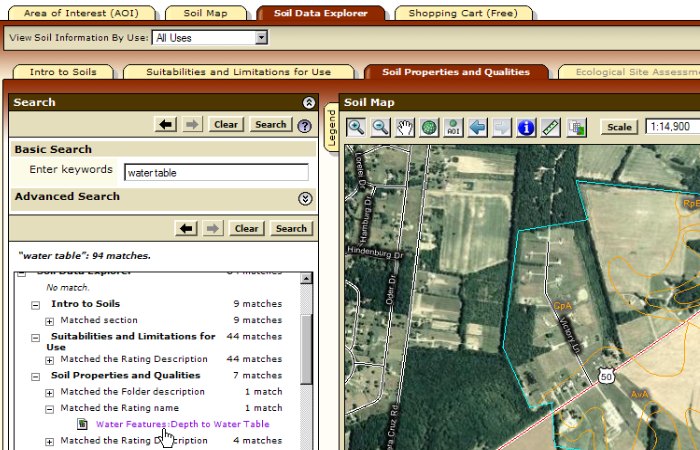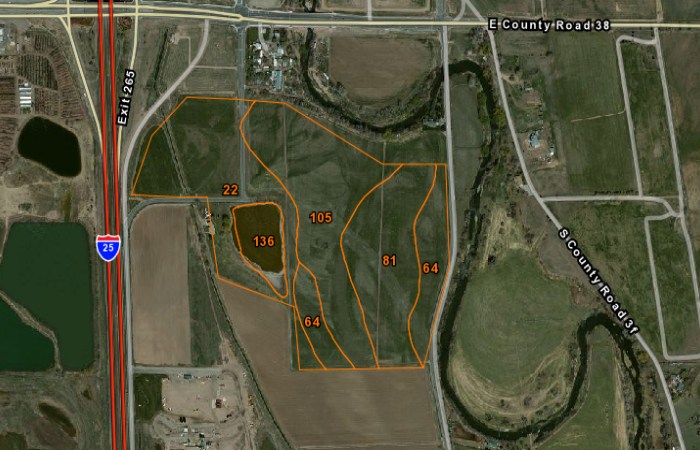Table of Contents
What is Web Soil Survey?
Web Soil Survey (WSS) provides soil data and information compiled by the National Cooperative Soil Survey.
Then, USDA Natural Resources Conservation Service (NRCS) operates and provides access to the world’s most extensive natural resource information system.
Soil surveying, soil mapping is classifying soil types and other soil properties in a given area and geocoding that information.
It also applies the principles of soil science and relies heavily on geomorphology, theories of soil formation, physical geography, and the analysis of vegetation and land-use patterns.
Primary data for soil investigation are obtained by field sampling and remote sensing.
.
Remote sensing primarily uses aerial photography, but LiDAR and other digital techniques are becoming increasingly popular.

History
In the past, a soil scientist carried paper copies of aerial photographs, topographic sheets, and map keys with him to the field.
Today, more and more soil scientists are bringing rugged tablet rugged tablets and GPS to the field.
The tablet can be load with digital aerial photography, LiDAR, topography, ground geodatabases, map keys, etc.
The term soil survey can also use as a noun to describe the published results.
In the United States, these surveys are publish in book form for individual counties by the National Cooperative Soil Survey. Soil studies are no longer published in book form today.
They are posted on the Internet and accessed through the NRCS Web Soil, where one person can create a custom web soil.
This enables a fast flow of the latest soil information to the user. In the past, it could take years before a paper soil survey was published. Today, it only takes a few moments for the changes to be available to the public.
Additionally, the most up-to-date soil survey data is available on the Download Soil Data tab of the NRCS Web Soil Survey for high-level GIS users such as professional consulting firms and universities.
NRCS has soil maps and the data available online for more than 95 percent of the nation’s counties and hopes to have 100 percent shortly.
Then, the website is update and maintain online as the only author source of information on soil studies.
We can use Web Soil surveys for general, local, and territorial agricultural planning.
In some cases, on-site investigations are require, e.g., Eg B. in soil quality assessment and specific engineering and nature conservation applications.
Guide to Web Soil Survey

Here is a quick overview to get started:
Go to the Web Soil home page at the following link: Web Soil Survey home page.
Click the large round green button labelled Start WSS to start the application.
To work interactively with Web Soil Survey, go to step 4 below.
Click the Download Soil Data tab to download soil data for an entire study area or data from the State Geographic Soil Database (STATSGO2).
Once the map is updated, you can use the map tool to zoom in.
Click the Zoom In tool to put the map in zoom mode.
Then, click the map to enlarge it, or click and drag the map to enlarge the drawn rectangle. Get as close as you need to.
Alternatively, click on one of the forms in the quick navigation on the left side of the browser window: Address, State and County, Land Survey Area, etc. Enter the information and click on Show.
Before viewing soil data, you must define your area of interest or AOI.
Also, you can set your AOI by drawing a rectangle or polygon on the map, or you can select your AOI over an entire land survey area.
Also, you can create a multi-part AOI using to Create AOI from Shapefile or Create AOI from Compressed Shapefile on the Import AOI menu.
Process
AOIs create with the AOI Rectangle, and AOI Polygon tools are limit to 100,000 acres, but the AOIs for soil survey areas are not.
To set your AOI to a rectangle and click the AOI Rectangle map tool. Then, you can click and hold the left mouse button and draw a rectangle on the map.
The rectangle you drew will set as your area of interest when you release the mouse button.
Set your AOI to a polygon and click the AOI Polygon Map Tool. Then, click on the points on map to define your AOI.
Finally, double-click the last point or hold down the Ctrl key while clicking the previous point.
To set up your AOI for a complete soil investigation area, open the Soil investigation area form in the quick navigation.
Also, use the drop-down menu to select a particular state and a soil study area. Then, click Set AOI.
After configuring your AOI, click the Soil Map tab to view the soil map and information about the map units.
Soil Map and Information
To create an excellent printable document that includes the map and information on the Soil Map tab, click the Print Version button and click the View button.
To run soil qualifications or soil reports, click the Soil Data Explorer tab, click one of the internal tabs: Suitability and Usage Limits, Soil Properties and Qualities, or the Soil Reports.
On the left side of browser window, then click the Open All button to expand all folders, or click an individual folder to list the items it contains.
Click any items to open the form, configure the options you want and click View Classification or View Soil Report.
It shows the data in tabular form and evaluations as a color-coded card. Click the Legend tab on the left side of the map to view a legend of the rating values.
To create a printable version of the web soil data, click on Print Version or Add to Cart:
The printable version creates a Portable Document Format (PDF) document that contains the grade or reports you have just edited.
Add to Cart
It adds the report or map to the cart.
You can add multiple ratings and information to the shopping cart and generate a Portable Document Format (PDF) that includes all of the items you added.
BY DEFAULT, the AOI soil map and the list of map units and their descriptions are adding to the shopping cart.
When you finish adding content to the cart, click the Cart (Free) tab, then click the Checkout button.
It will generate a single Portable Document Format (PDF) document containing all the added elements. By default, the soil map’s content is automatically include in your PDF (Portable Document Format).
You use a search function to search for specific keywords in the application. The search form in the upper left corner of each tab.
Soil Data
Set your area of interest, click Search, enter keywords such as B. Water Classification or KCl, and click the Search button.
Search results are links that help to navigate to the point in the application where we can find the keywords.
Once you have defined your AOI, you can also click the Download Soil Data link to download tabular and spatial soil data for your AOI.
It would help if you had Microsoft Access software to use tabular data and ArcGIS software to use spatial data.
In Web Soil, context-specific help is available by clicking the question mark icon.
For more information, you can see “How do I get help using the Soil Survey on the web?” on the FAQ: How can I get help using the Soil Survey on the web?
If you need help with specific questions about soil data, you can click the Contact Us link.
Also, the contact link is locate under the USDA logo in the upper left corner of the Web Soil Survey.
